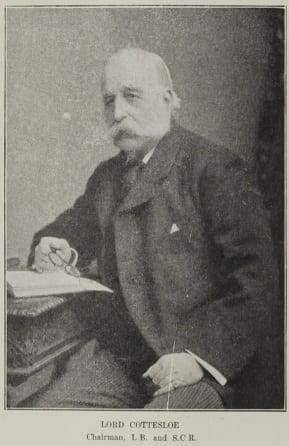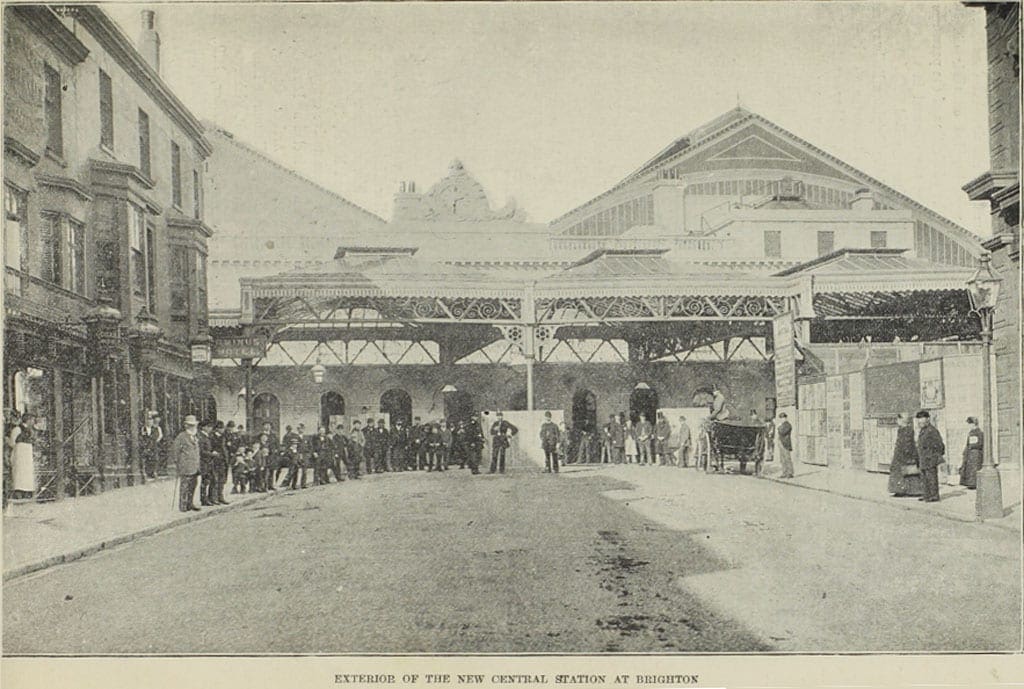Illustrated interviews: Sir Allen Sarle, General Manager, London, Brighton and South Coast Railway.

The retirement of Sir Allen Sarle in the course of the next few weeks means the disappearance of an old familiar face from the management of the London, Brighton and South Coast Railway.
Like Sir Henry Oakley, of the Great Northern; Mr Tennant, of the North Eastern; and Mr W. Pollitt, of the Great Central, Sir Allen rose from the position of an accountant to the coveted place of General Manager by sheer hard work and perseverance.
Monthly Subscription: Enjoy more Railway Magazine reading each month with free delivery to you door, and access to over 100 years in the archive, all for just £5.35 per month.
Click here to subscribe & save
His career on the Brighton Railway has not been altogether a bed of roses, but amid difficulties that would have disheartened many a man he steadfastly pursued an honourable course, and in his approaching retirement he will be followed with the best wishes of all ranks in the Company’s staff and with the kindly appreciation of an exacting public.
Allen Sarle, coming of Cornish parentage, was born in 1828 at Westness Rousey, in the Orkney Islands. His education began at the Selkirk Grammar School and was continued at the High School, Edinburgh, in which city he entered commercial life as a junior clerk to a firm of stockholders.
Ambition tempted him to London, and in 1845 he obtained an appointment in the service of the Shropshire Union Railways Company, whose offices were at that time in Great George Street, Westminster. When, three years later, the Shropshire Union Railways became part of the London and North Western system, Mr Sarle entered the audit office of the London and Brighton Company. He proved himself an expert in figures and in 1854 was advanced to the position of accountant.

The Company’s great financial troubles in 1867 completely broke down the health of Mr Frederick Slight, who was then Secretary, and on the resignation of that gentleman, Mr Sarle was chosen as his successor.
He discharged the duties of Secretary until 1885, and then, on the death of Mr John Peake Knight, the General Manager, the Directors, in a spirit of what has conclusively proved to be a false economy, decided that henceforth the offices of General Manager and Secretary should be united in the same person.
Mr Sarle was, I believe, no party to this determination, but, anxious to do his best for the Company, he undertook to discharge as efficiently as was possible the duties of the dual position.
He has loyally kept his word; but now, after the lapse of twelve years, I should say that he finds the continuous unceasing attention, which is necessary to the efficient performance of the duties of the dual office more than should be entrusted to any single person.
Secretarial work is, of course, chiefly clerical and indoor, while that of General Manager should be mainly outdoor – visiting and inspecting the Company’s lines, stations, works and property generally. That this double burden of responsibility has been discharged without the interests of the Brighton proprietors being allowed to suffer reflects the highest credit upon Sir Allen Sarle.
“It is a great mistake,” he told me once, “for any important Railway Company to unite the two offices because it is impossible for any man to discharge the duties of both either to the advantage of the proprietors or with justice to himself.”
No other Railway Company of high standing in the country has ventured to follow the example of the Brighton in this respect, although the offices were, up to recently, combined on the South Eastern, and in the circumstances there cannot be any surprise felt at the announcement which was publicly made in October last – when Sir Allen Sarle handed his resignation to Lord Cottesloe, the present Chairmen of the Directors – that in future the offices of General Manager and Secretary will be kept entirely distinct.

This is as it should be and universal experience goes to show that the change, late though it be in the day, will tend to the credit of the Company and also to the ultimate benefit of the proprietors.
When Sir Allen Sarle first went to London Bridge the Brighton Company did not possess a single third-class carriage, which has a roof. (At that time the Parliamentary carriages were distinct from the third-class vehicles.)
Upon only one or two of the Northern systems, on which long distances were being travelled, were covered third-class coaches to be found, but even these were open at the sides so that the “poorer travellers” – who now contribute so largely to the revenue of British railways – had merely partial protection in times of tempestuous weather.

The story of the change from early discomfort to modern luxury – as it is seen in an increasing number of instances today – is familiar to every reader of the Railway Magazine.
Public opinion made itself felt in the council of the nation, and under the gentle influence of the Board of Trade, the railway companies were gradually convinced of the necessity of improving the character of third-class accommodation…
Original article excerpt from The Railway Magazine, January 1898
…Want to read the full article? Add The Railway Magazine archive to your subscription and get access to over 120 years of The Railway Magazine, all for just £6!




